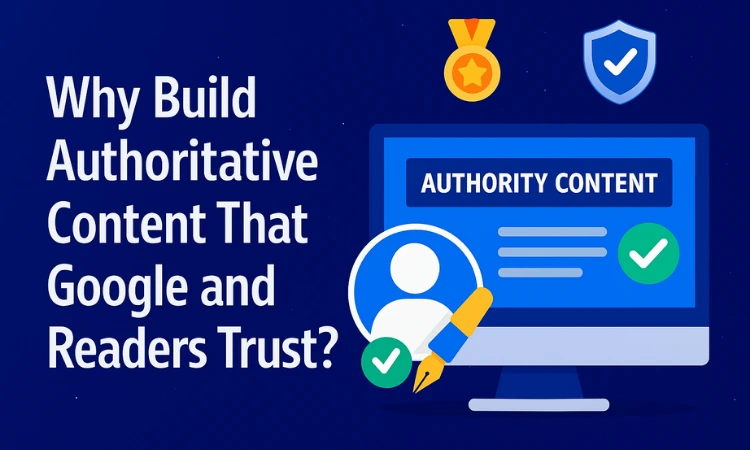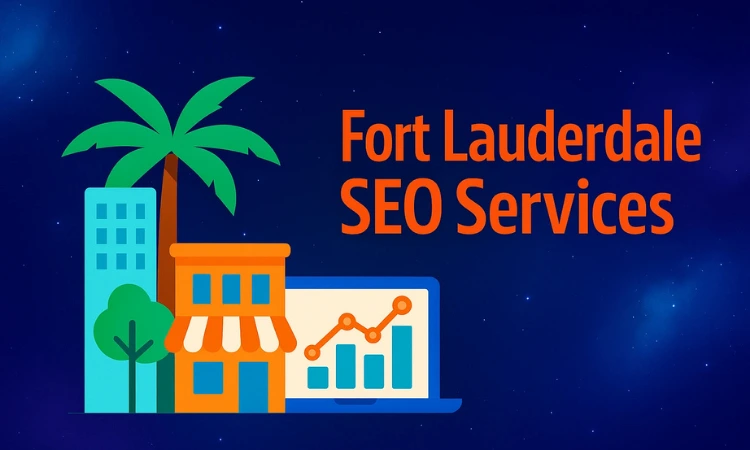Introduction
In the evolving world of digital marketing, mastering organic SEO is essential.
As Google and other search engines constantly refine their algorithms to meet heightened user expectations for tailored search results, businesses must leverage advanced SEO techniques to distinguish themselves online.
In 2025, achieving top organic search rankings is more challenging than ever, but it’s also crucial for survival in this cutthroat market.
To thrive, you must implement the best SEO practices, innovate with modern strategies, and enhance your website’s visibility and relevance.
Tactics like creating a robust backlink profile, fostering authentic online relationships, and elevating your site’s content quality are incredibly effective. However, these practices must be sustained over time.
Here are some practical SEO tips that can propel your online presence to unprecedented levels.
Enhancing Your Content Strategy
Adopting a robust SEO strategy is essential for successful content marketing efforts in the digital era, where online content is vital. It would be best to focus on creating content that draws more traffic while establishing your brand’s credibility and encouraging user interactions.
Below, we’ll discuss key tactics for developing high-quality content and reaping the rewards of a well-executed content strategy.
1. Use Copywriting Best Practices to Hook Readers
Capturing and retaining the online community’s attention is by no means easy. Effectively engaging readers requires patience and intelligent work.
You should adopt copywriting techniques that resonate with your interests and motivations, as best described by the AIDA model:
- Attention
- Interest
- Desire
- Action
The AIDA Model
The AIDA model is one of the most powerful frameworks in copywriting. It’s a time-tested approach that provides an outline to create convincing and engaging content. This model is divided into four steps:
-
Attention
The first step in the AIDA model is drawing the reader’s attention. Much like a captivating headline, your content should immediately grab the reader’s attention through intriguing questions and statistics that entice them into further reading.
-
Interest
Once you get their attention, keep them invested in your content by addressing their queries with compelling insights and solutions.
-
Desire
Next, seed a passion for your product, service, or message in your target audience. This is where you should showcase your offerings’ value proposition, unique benefits, and features that can stir their emotions.
-
Action
The final stage is about prompting action—a clear call to action that leverages a sense of urgency and steers readers into making a purchase, subscribing to your services, or sharing your message with others.
Should you incorporate these principles into your content creation process, you can craft captivating content that will entertain your audience.
2. Build Out Topic Clusters
In the expanse of the digital realm, navigating through pieces of information can be overwhelming for both users and search engines. This is when topic clusters promise a simple solution.
A topic cluster relates to fragments of content clumped by a shared topic and correlating subtopics. With your content organized into a hierarchical structure revolving around a core topic, it becomes convenient for visitors to access desired content.
At the same time, it strengthens your website’s authority in terms of search engine optimization.
To structure topic clusters for your website, do the following:
-
Identify Core Topics
Begin by pinpointing core topics that align with your business objectives and the target audience’s interests. These topics should be wide-ranging enough to engulf multiple related subtopics. Simultaneously, they should be specific and sufficient to promise germaneness and logic.
-
Create Pillar Pages
Develop exclusive pillar pages for each core topic, focusing on providing authoritative content as a foundational resource. Optimize these pages for relevant keywords and ensure they are structured in a user-friendly arrangement.
-
Develop Subtopic Content
Create supporting subtopic content, highlighting numerous aspects of the main topic. These subtopic pages should connect correspondingly to the pillar pages and one another, forming a web of content that revamps user experience and organic search rankings.
It’s worth noting that creating topic clusters is a tactical approach to content organization that magnifies a website’s topical authority and visibility in organic search results.
3. Maximize Your SERP Real Estate
Securing a top position on search engine rankings is a priority for businesses looking to elevate their website’s visibility and drive search traffic. This is where the use of structured data comes in.
-
Structured Data
Structured data refers to data that is organized in a structured format. It provides search engines additional context about a website’s content, enabling them to display rich snippets in search results.
These snippets contain valuable information, such as product ratings and event dates, that contribute to the real estate of the Search Engine Results Page (SERP) and the congruence of a website’s listings.
-
Use of Structured Data
While incorporating structured data within your content, leveraging multimedia elements like YouTube videos cannot be disregarded.
In fact, including high-quality images, infographics, videos, and interactive features can make your website visually appealing and informative, thus attracting more traffic.
-
Parasite SEO
Tactics like Parasite SEO is a proven approach to swell your website’s SEO rankings. It leverages high-authority platforms like YouTube and Linkedin to rank for target keywords, helping you earn additional spots on the first page of any search engine’s search results.
-
Reference Websites
Apart from incorporating interactive multimedia elements, consider using reference websites like schema.org. Schema.org is a platform that webmasters can utilize to mark up their web pages and feed search giants with clues about the meaning and context of the content present on them. This helps browsers interpret your content and promises rich snippets.
With your content optimized for relevant keywords, you are ready to top the list in both YouTube and Google rankings.
Technical and On-Page SEO
In content marketing, technical and on-page SEO are considered crucial for refining websites’ performance and reinforcing their organic rankings. These approaches are renowned for optimizing numerous technical facets of your website.
Such tactics may incorporate tweaking on-page elements and their alignment with search engine algorithms and user expectations.
4. Optimize Strategic Internal Linking
Strategic internal linking is a powerful SEO aspect most website owners overlook. It plays a pivotal role in helping search engines find, index, and comprehend all of the website’s pages.
In other words, strategic internal linking encompasses the placement of internal links within a website’s content in a way that strengthens the bond between its web pages, helping them rank higher in organic search results.
With the correct implementation, organic traffic can be steered to the correct information. Meanwhile, it also caters to the effective distribution of link equity, signaling search giants about the importance of structured content.
Leveraging analytics is critical in narrowing down high-authority pages within your website and purposefully bridging them to suitable content to optimize strategic linking. This dispenses link equity from authoritative pages to other areas of your website pages.
Apart from strategically placing internal links, using the right anchor text further revamps the website’s context and relevance. Anchor texts must accurately describe the content of the fastened page and provide a vivid indication of what to expect on the other side.
Together, these elements work harmoniously, boosting the search engine ranking of linked pages for a target keyword.
5. Implement Advanced Site Structure and UX
In the modern era, the architecture and user experience (UX) of a website play a crucial part in its success, whether it be drawing organic traffic or bumping search results. A well-designed site structure almost always attracts more visitors since it provides users and search engines with a convenient gateway to navigate and discover relevant content.
So, if you want to make your website more intuitive with SEO-friendly architecture, keep an eye on user-related metrics, let’s say, Core Web Vitals. Core Web Vitals are a group of user-focused performance criteria launched to calculate web pages’ loading and visual steadiness. These metrics promise critical insights into the overall user experience and directly impact organic search engine rankings.
Speaking of best practices to enhance user experience, a popular approach is to organize your website’s content into logical groups and subgroups. This allows for a more hierarchical structure, facilitating user navigation and indexing.
In addition, optimizing your website for other platforms, such as Android and iOS, is worth doing. With mobile devices becoming increasingly common, mobile optimization of your website is non-negotiable.
A website with a mobile-friendly design enjoys many benefits. For instance, it has a higher chance of improving its search engine rankings, particularly because Google and other search giants prioritize mobile-responsive websites in their algorithms.
Websites that enable page optimization retain users while minimizing bounce rates. By honing site speed, loading times, and page speed, your website provides a seamless browsing experience to users, cultivating better SEO performance.
6. Leverage Paid Ads for Strategic Link Building
Paid advertising promises a strategic opportunity to boost content visibility and earn valuable backlinks. It serves as a powerful mechanism that amplifies the reach and visibility of a website’s content across numerous platforms, including search engines, social media networks, and content discovery platforms.
By ensuring that advertisements reach the target audience, your content gets higher exposure and a chance for genuine backlinking opportunities, especially from influencers, businesses, and other authoritative sources.
However, when leveraging paid advertisements for constructing strategic connections, prioritize content that resonates with informational intent—content that educates, informs, or provides valuable insights to the web community.
Showcase information like research findings, expert advice, detailed tutorials, news articles, or data-driven insights to engage organic traffic that actively seeks sources of knowledge in your specific field or sector.
Nevertheless, it’s worth noting that successful link-building through paid advertisements lies in attracting quality backlinks from reputable sources. Any content that offers unique value or perspectives increases the likelihood of earning organic backlinks from renowned websites and online publications interested in citing your content as valuable for their audience.
Or, strategically reach out to influencers who indulge in your promoted content to enhance the potential of earning quality backlinks.
It’s also essential to track paid advertising campaigns to measure their success. Monitor key performance indicators such as click-through rates, engagement metrics, referral traffic, and backlink acquisition to help optimize your data-driven strategies and make them more effective over time.
Remember, refining targeting criteria, ad creatives, and messaging based on user feedback paired with performance data will streamline your strategic link-building efforts in the long haul.
Content-Driven SEO Techniques
Content-driven SEO tactics are the cornerstone for achieving long-lasting organic search ranking and pulling relevant traffic to your website. Their foundation rests on the fact that valuable content serves as the backbone of the digital ecosystem.
Beyond all the keywords and technical optimizations, the quality of the content captivates users and engenders a sense of trust in the online community. Keep in mind that content that helps inform, educate, and inspire users is a tool to foster genuine engagement and relationships.
7. Capture and Compete for Featured Snippets
Securing featured snippets is the most coveted strategy for enhancing visibility and traditional search results. Snippets are concise and informative tags at the top of search results. They promise users instant solutions to their queries without requiring them to click through a website.
Moreover, snippets often take the shape of paragraphs, lists, tables, and videos. To top the search results list, they must be relevant and able to fulfill the target audience’s needs.
Luckily, there are specific tactics present to augment content and win snippets. These are as follows:
-
Identify Target Queries
First, spot target queries for which you want to capture snippets. These are typically informational queries that begin with words like “how to,” “what is,” or “best ways to,” indicating that users are seeking specific information or solutions to their problems.
-
Create Comprehensive Content
Second, craft well-structured content that clearly and concisely addresses the target query. You may craft headings, bullet points, and numbered lists to organize content logically and make it easy for search engines to extract relevant information.
-
Optimize On-Page Elements
Third, optimize on-page elements such as page titles, meta descriptions, and headers to align with the target query and provide summaries of your content. Ensure you embed relevant keywords naturally throughout your content or incorporate semantic variations to enhance germaneness and context.
-
Provide Clear Answers
Fourth, craft content that provides vivid and accurate answers to the target query, preferably within the first few sentences or bullet points. Use plain language while avoiding jargon to make it accessible and understandable to a broader audience.
-
Use Structured Data Markup
Lastly, implement structured data markup to provide additional context to search engines. To expand snippet eligibility, try appropriate markup tailored for different types of content, such as articles, how-to guides, and FAQs.
After all, by embracing featured snippets as a critical component of content-driven SEO strategy, you can position your website for meaningful engagement with your audience.
8. Diversify Your Visuals
Visual elements are an essential factor in the success of a content-driven SEO strategy. They visually appeal to the user, enticing them to interact with the content. While most content nowadays features visual elements, using them correctly matters most.
With the rise in technological advancements, multimedia elements such as GIFs, videos, and dynamic images are becoming increasingly common, and for good reason. Such visuals possess a unique ability to swiftly convey information, serving as a compelling strategy for many businesses even today.
Visual elements are also extremely good at capturing the audience’s attention through immersive experiences and can evoke their emotions. But, to effectively determine your website’s visual efficacy, monitoring engagement metrics is vital. This entails monitoring your website’s bounce rate, time on page, and pages per session.
Search engines see websites with low bounce rates and high engagement levels as more relevant, authoritative, and user-centric. Conversely, those with a high bounce rate and low user interaction rarely make it to the top of the search results.
When it comes to maximizing visual engagement, keep the following in mind:
-
Harmonize Your Visuals with Content
Ensure visual elements harmonize and augment your written content, reinforcing key messages and complex concepts.
-
Augment for Optimal Performance
Streamline visual content for fast loading times and seamless user experiences across various devices through image and video compression techniques.
-
Craft Original Content
Create original, high-quality visual content that resonates with your target demographic and reflects the website’s content.
-
Critically Analyze Performance
Regularly scrutinize engagement metrics and user feedback to gauge the efficacy of your visual content strategy.
Implementing the practices mentioned above can optimize engagement and bounce rates, amplify social sharing, and improve brand perception of your offerings.
9. Conduct A/B Testing for Content Optimization
A/B testing, also known as split testing, is a systematic method for tuning various aspects of a website, such as content length, visuals, and the placement of call-to-action buttons. It compares multiple versions of webpages to see which one performs better.
-
Content-Length
To conduct A/B testing, start experimenting with varying lengths of textual content, ranging from concise to comprehensive details. A/B trials different iterations of content length to gauge their impact on user engagement metrics. Analyzing each variant’s performance will help you determine the optimal content length that resonates most effectively with the target audience.
-
Visual Elements
Similarly, test different visual elements, including images, videos, infographics, and interactive media, to assess their impact on user engagement and conversion rates. Experiment with diverse formats, styles, and placements to determine elicit visual elements.
-
Call-to-Action Placements
Lastly, evaluate the placement, design, and messaging of your call-to-action (CTA) buttons to maximize their effectiveness in driving user actions. Compare different variations in CTA placement and design elements to pinpoint the configuration that yields the highest conversion rates.
If conducted correctly, A/B testing can serve as a basis for informed decision-making based on empirical data. It can facilitate a culture of continuous improvement and even mitigate risks associated with implementing changes to your digital assets.
Advanced Link Building and Analysis
Advanced link building represents a sophisticated approach to strengthening the authority and visibility of a website within the digital landscape. “Link building” refers to strategically acquiring high-quality backlinks from authoritative sites paired with a comprehensive analysis of their backlink profile.
Subsequently, it elevates their organic search ranking, increases web traffic, and establishes their content as a convincing voice within their respective industry.
10. Analyze Your Log Files
Log file analysis holds profound significance in the content-marketing realm. It provides invaluable information into the intricate relationship between search engines and the website’s digital infrastructure.
Log analysis is a powerful tool for businesses to decipher the complex mechanisms behind search engine crawling processes. Businesses can meticulously scrutinize log files generated by web servers to understand how search engine bots navigate and interact with their online domain.
Additionally, it details the frequency, timing, and depth of search engine bots visiting a website. This granular understanding enables documentation of patterns, trends, and anomalies in crawl behavior. The gathered information is later utilized to fine-tune the website’s architecture and content strategy for optimal visibility.
Another critical benefit of log file analysis is its ability to identify and optimize crawl budget allocation. A crawl budget is a concept introduced by search engines like Google that refers to the finite amount of resources allocated to crawling and indexing a website within a given timeframe. You can drive maximum exposure by purposefully allocating the crawl budget resources to high-value landing pages.
Log file analysis also facilitates the detection and resolution of crawl errors, such as broken links, redirects, and inaccessible content, which may hamper search engine bots’ ability to properly index and rank your website.
11. Utilize Unlinked Mentions for Link Building
Undoubtedly, online visibility is paramount for businesses seeking to thrive long-term. This is when leveraging unlinked brand mentions presents a lucrative opportunity for bolstering link-building efforts.
To harness the power of unlinked mentions, it is crucial to keep track of instances where your brand is referenced but not hyperlinked. Once spotted, these mentions can be transformed into quality backlinks that raise the website’s credibility and prominence in organic search results.
-
Capitalize and Convert Unlinked Mentions
The initial step to capitalize and convert unlinked brand mentions requires deploying robust monitoring tools that scour the internet for instances where your brand is mentioned without a hyperlink. These tools often range from advanced SEO platforms to social media monitoring software that helps detect potential opportunities for link acquisition.
-
Initiate Strategic Outreach
After the links are identified, the next step is to initiate strategic outreach efforts to convert these mentions into useful backlinks. Reach out to the authors and publishers responsible for the content containing the unlinked mention and request that they integrate a hyperlink to your website.
Be mindful that specific dedicated tools and technologies can further streamline the process of tracking and converting unlinked brand mentions into backlinks. They promise advanced features like real-time monitoring, customizable alerts, and automated outreach workflows to guarantee success.
Once you have converted most unlinked mentions into backlinks, a considerable bump in your website authority is imminent. Your online visibility will also skyrocket, resulting in elevated SEO performance and brand reputation.
12. Remove or Repurpose Underperforming Content
Closely monitoring the website’s SEO health is an excellent way to keep it on track. But sometimes, things can go wrong, resulting in poor reach and visibility of your digital offerings.
Therefore, auditing can prove effective in curbing the damages caused by negligence. Website audits are a tested mechanism for managing underperforming content while maintaining a website’s robustness.
Underperforming content significantly reduces a website’s standings in the organic search results and can even impede your overall SEO efforts. However, sticking to a proactive strategic approach can turn your content’s trajectory around.
-
Conduct a Content Audit
Handling underperforming content can be tricky. However, by conducting a thorough content audit of your website, spotting web pages or content that doesn’t align with your performance goals becomes easy.
Utilize web analytics tools, such as Google Analytics, to evaluate critical metrics, such as traffic, engagement, and conversion rates for each page. Also, assess numerous qualitative factors, such as relevance and alignment with your website’s objectives, to spot any previously overlooked loopholes.
-
Identify Underperforming Content
As you proceed with the audit process, pay close attention to content that underperforms regarding conversions.
Look for patterns that may indicate areas for improvement, such as outdated information, broken links, duplicate content, and outbound links to other sites that are no longer relevant. By pinpointing such areas, you are ready to optimize your website’s content.
-
Remove Irrelevant Content
If you cannot salvage underperforming content, remove it permanently from the website. This may encompass identical information or obsolete statistics affecting your website’s credibility.
-
Repurpose Content
For underperforming content that still holds potential value, consider repurposing or updating it to better align with your audience’s needs and preferences. You can perform tweaks like redirecting low-quality external links to other sites or creating content in a completely new format.
Bear in mind that breathing new life into underperforming content can drastically uplift the SEO performance of any website.
-
Monitor Results
Once you have successfully repurposed or removed underperforming content, closely monitor its impact on your website’s performance and SEO metrics. Keep track of any changes in traffic or Google search rankings to gauge the effectiveness of your results. This will help you make result-based adjustments to your strategy down the road.
13. Find and Fix Keyword Cannibalization Issues
Keyword cannibalization is a significant challenge that many businesses face as they strive to climb up the organic search results column. Usually, it surfaces when multiple pages within a website target the same or similar keywords.
As a result, they inadvertently cannibalize each other’s SEO rankings and negate their overall effectiveness. Therefore, a systematic approach is required to counter such issues.
-
Perform Keyword Analysis
Keyword research and analysis is an excellent choice for mitigating the effect of keyword cannibalization. It entails a comprehensive analysis of keywords that spots instances where multiple pages compete for the exact keywords.
A digital arsenal tool, such as the keyword research tool, is a handy option in this regard, as it effectively detects overlapping keywords across your website.
-
Evaluate Content Relevance
As soon as potential instances of keyword cannibalization are identified, ensure that you evaluate the relevance and differentiation of the content present on each page. Contemplate if the content provides unique value to the online community and addresses their search intent.
A rule of thumb is differentiating the content by incorporating diverse perspectives or aiming for long-tail keywords to capture niche audiences.
-
Consolidate Overlapping Content
Consolidation involves combining similar pages into a single authoritative resource. If you find pages that contain overlapping content with an exact target keyword, consider consolidating such pages to eliminate redundancy.
-
Adjust On-Page Elements
Finally, each page’s on-page elements and linking structure should be adjusted to improve its relevancy for target short- and long-tail keywords. Remember, on-page elements such as page titles, meta descriptions, headings, and body must align perfectly with target keywords and search intent for maximum effectiveness.
Identifying and resolving keyword cannibalization can considerably improve each page’s potential to rank prominently in Google search results.
Conclusion
In today’s changing world of 2025, businesses must use cutting-edge SEO tactics to remain competitive and relevant. Constantly improving and innovating strategically is critical to navigating the complexities of evolving search algorithms and user demands.
By utilizing SEO tools and methods, companies can enhance their SEO efforts to boost their visibility and stay ahead in a fiercely competitive digital landscape. Embracing these advanced SEO strategies isn’t just an option but a necessity for success in this environment, helping businesses adapt and secure a solid online position.
















